Media | Articles
How the 1976 Kawasaki KZ900 LTD made motorcycle history

Honda’s revolutionary 1960s ad campaign, “You meet the nicest people on a Honda,” gets a lot of credit for helping soften motorcycling’s unsavory image and grow ridership in America. By the early 1970s, many of those nice people were having some naughty good fun ripping around on Honda’s CB750-Four, or, to truly rule the road, the mighty Z-1 that Kawasaki launched for 1973 to counter the historic Honda.
Even if those Japanese four-cylinder superbikes could smoke anything from Britain or Milwaukee, they came up short on style and charisma. They looked like just about every other Japanese bike, a trend that inspired the “Universal Japanese Motorcycle” (“UJM”) nickname. Some owners looked at low-riding Harleys with at least a little envy, and the Japanese brands were about to figure this out.
Kawasaki would get there first. Its 1976 KZ900 LTD melded Japanese superbike performance with American hot rod-flavored style. The combination proved to be just what the market wanted. The 900 LTD became a gotta-have-it bike, and its impact on the industry would be enormous and far-reaching.
Wanted: American style
With the ’74 and ’75 Z-1s unchanged from the original, Kawasaki distributors began asking for something fresh. Specifically, they wanted to see a Z-1 variant with “American” styling. Riders of Brit bikes and Harleys had for years been customizing their machines with high-rise handlebars, extended forks and stepped seats. “Easy Rider” failed to have the same motivating effect on riders of Japanese bikes.
Wayne Moulton, director of operations for Kawasaki in the U.S., saw an opportunity. Having run a Triumph shop in the 1960s, Moulton knew the customizing trend well. He proposed ideas for a European-style sport bike and a low-slung hot rod, both based on the Z-1. Kawasaki distributors chose the hot rod.
Marketplace
Buy and sell classics with confidence
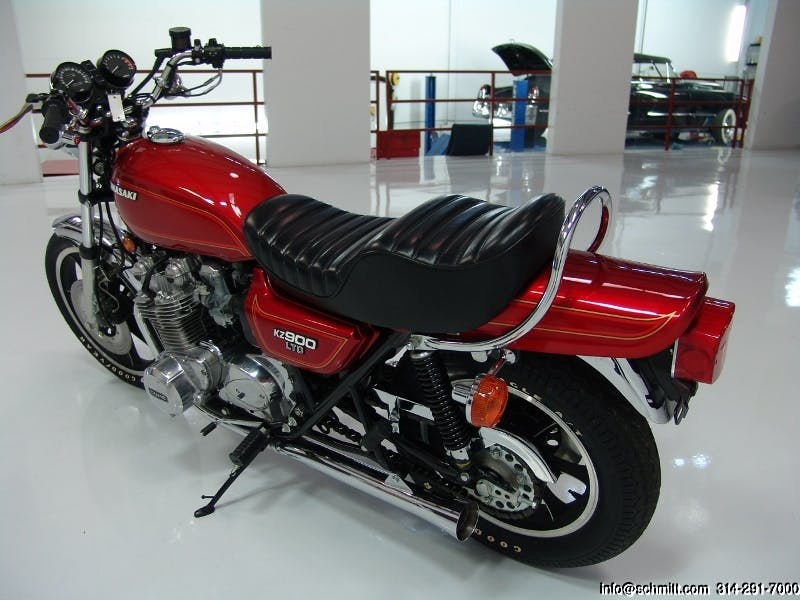
At Kawasaki’s tech building in in Santa Ana, California, Moulton began reworking a Z-1. He created a teardrop-shaped tank by welding the top section of a KZ400 tank to the bottom half of a Z-1 tank. To give the bike a lowered look, he switched the Z-1’s stock wire-spoke wheels for Morris cast-alloy wheels (16-inch at the back) with fatter tires.
Moulton gave his Z-1 custom one-inch longer fork tubes, cut the front fender and added a stepped seat. A pullback handlebar, a must for the hotrod look, replaced the standard bar. The Z-1’s curvy tail piece already fit the custom theme, although a unique, curved grab bar was used for the LTD. The production bike would add a chrome passenger grab handle and chrome chain guard, too.
More than just a pretty tailpiece
Moulton felt the new Kawasaki custom should have a performance upgrade to go with the hot rod look. He switched the four-into-four factory pipes that Kawasaki (and Honda) liked so much in the 1970s for a set of aftermarket four-into-two bell-mouth pipes from Jardine. These further lowered the look while cutting some weight. Twin front disc brakes replaced the Z-1’s single disc, and a single disc replaced the rear drum. Boge Mulholland adjustable shocks held up the rear.
Kawasaki’s engineers were less enthusiastic about Moulton’s prototype than he was.
“They thought we were crazy, that we had ruined their beautiful motorcycle,” Moulton recalled for American Motorcyclist, the American Motorcycling Association magazine, in 1985. He was by then an executive with that organization.
The engineers expressed concern about suspension geometry and handling for the customized Z-1, but testing proved the bike to be stable. Moulton also had to convince Kawasaki engineers to ditch the center stand, a deletion needed to use the smaller rear wheel and lower exhaust pipes.
Superbike power
For 1976, Kawasaki renamed the Z-1 “KZ900,” in keeping with its other four-stroke models. Moulton’s hot rod was called KZ900 LTD. The “LTD” part was real; production in 1976 was limited to 5000 bikes. The U.S. would get 2000 of those, priced at $3295.
With its road-hugging stance, the 900 LTD exuded just the right amount of mischief without appearing felonious. Kawasaki assembled the American-style hot rod in its then-new Lincoln, Nebraska plant, the first American factory for a Japanese motorcycle or automaker.
Moulton worked with individual aftermarket suppliers to tailor his chosen parts to the bike. Fat Goodyear white-letter tires picked up on a trend from American muscle cars, which by the mid-1970s were essentially comatose. The Morris cast wheels used on the first-year 900 LTD were replaced with Enkei wheels for 1977.
Kawasaki’s 900 LTD had really fathered two trends, the Japanese cruiser and the muscle bike. Its 81-horsepower inline-four was still king of the two-wheeled world in 1976, capable of revving to 8500 rpm and vaulting the 540-pound 900 LTD through the quarter-mile in the mid-12s. Compared to the standard KZ900, the LTD used 2-mm smaller carburetors to give a stronger midrange urge.
Cruiserpalooza
The 900 LTD was an immediate hit, and demand quickly outstripped the constrained supply. Motorcycle media liked the LTD’s style and praised overall handling and braking, but the bike drew barbs for compromised ergonomics that would become endemic to the cruiser breed. Cycle magazine’s review blasted the pull-back handlebar in particular, saying the design caused “a cocked and eventually cramped wrist” and “when you’re fighting wind pressure by hanging on to the grips you quickly feel the strain.”

Also, the LTD’s scooped seat that looked so cool also locked the rider in place, hurting long-distance comfort. At least for this first LTD, Kawasaki had not moved the pegs forward, something later Japanese cruisers would copy from Harley to complete the armchair-slouch riding position.
For 1977, a displacement bump turned Kawasaki’s hot new custom into the 85-horsepower KZ1000 LTD, and an LTD version of the KZ650 would soon join the line. Production of LTD models remained limited, however, and the other Japanese brands jumped in to supply the mushrooming new market.
Yamaha introduced its two-, three- and four-cylinder Specials; Honda brought out its Customs, and Suzuki had its “L” bikes (for “Low”). Kawasaki’s LTD ultimately became a regular production series, adding a two-cylinder 440 and a four-cylinder 550, with a 750 replacing the 650. A two-toned, de-chromed Spectre offshoot series added shaft drive.
Rise and fall of the muscle bike
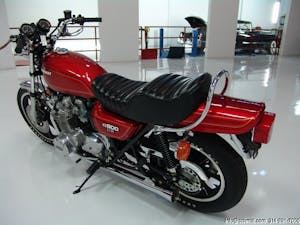
Moulton himself felt the 900 LTD had more of a British custom vibe than a Harley look. As it turned out, many customers wanted the Harley look and sound. Yamaha’s Virago married a new V-twin engine to cruiser style, and others quickly followed. By the mid-1980s, a full-blown Harley clone category had emerged.
The Japanese bike makers hedged their bets, though, also launching a wave of four-cylinder power cruisers, a.k.a. muscle bikes. Honda had its V4-powered Magnas, and Suzuki followed with the oddly styled but fast V-4 Maduras. Yamaha went all in with inline-four Maxims and unleashed a 145-hp V4 beast called the V-Max. Reprising its original 900 LTD formula, Kawasaki put a tuned-for-torque version of the Ninja 900 sport bike inline-four into the drag bike-styled ZL900 Eliminator.

Except for the V-Max, which is still made today (now at 197 horsepower), that trend proved to be short-lived. The Harley clones saturated a motorcycle market that had become sharply segmented, with narrowly focused sport bikes on the other side of the coin. (Somewhat ironically, Harley would have a 16-year run with its first true muscle bike, the 2002-2017 V-Rod, though many Harley purists professed disdain for it.)
Japan’s V-twin cruisers, meanwhile, would get larger and more powerful, but despite some flashes of ingenuity (Suzuki’s first Intruder and the Yamaha Road Star Warrior, for example), these would always be rooted in imitation.
The Kawasaki KZ900 LTD was an original.
Our thanks to Daniel Schmitt & Co. Classic Car Gallery, in St. Louis, Missouri, for providing photos of the 1976 Kawasaki KZ900 LTD featured in our story. The bike is a never-titled LTD with just 2.9 miles that this classic car and motorcycle dealership sold to a collector a few years ago.
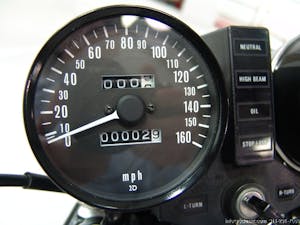

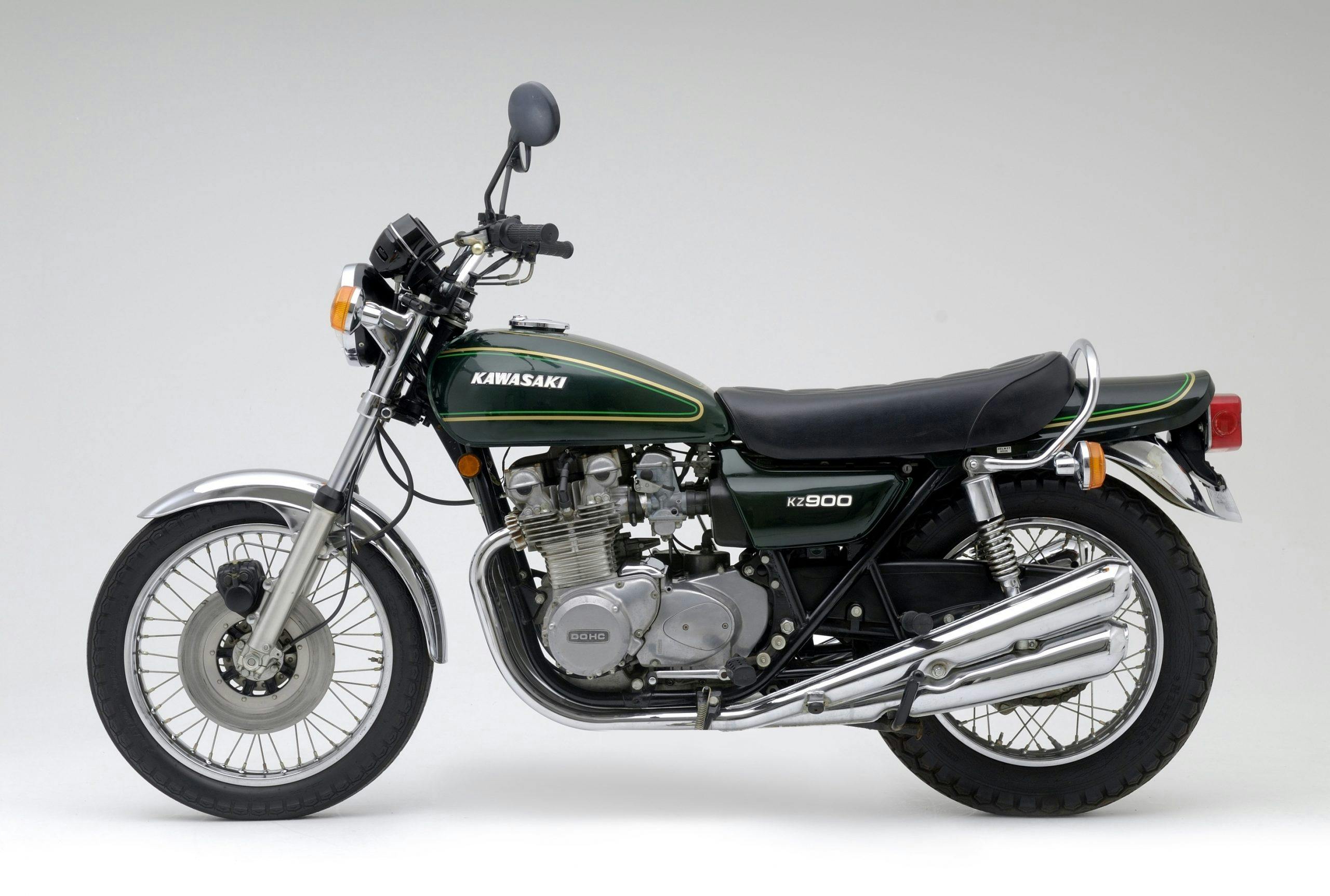

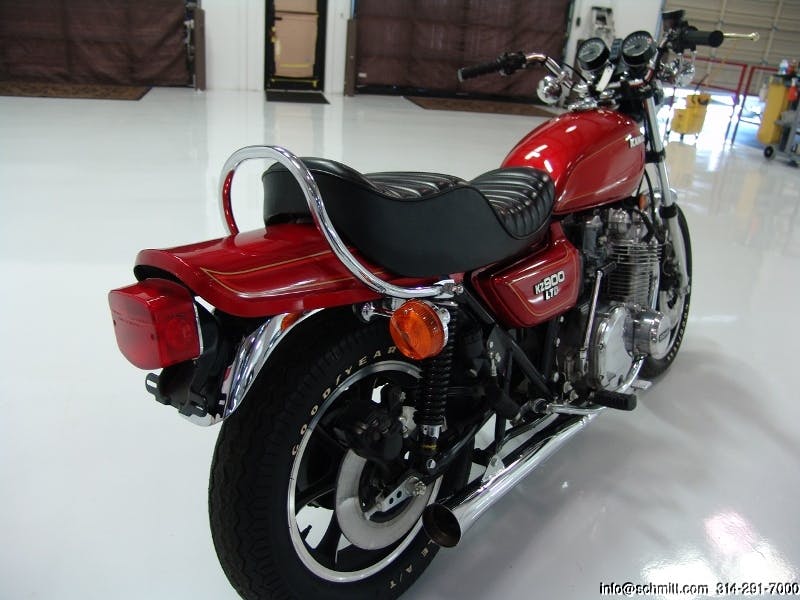







An informative short summary of the 1976 900 LTD. I own four Kawasaki 900’s that I’m about to restore. I’ve been collecting them since 1978. My first was the 1976 LTD I bought in 1978. I also have a 1974 Z1 that has a Rob Carpenter (Pennsylvania ) rebuilt motor and exhaust system. I’m known to my biker friends as the Kaw-boy. I’m in search of original parts and would appreciate it if you had any contacts. Thank you.
In june of 1976 i bought my LTD 900 i was 21 years old and still have it today. I toke better care of it than my marriages that being said i think its time to let it go. how do i price it fairly what source can i use. Thanks John
is it still for sale ?
I live in Illinois on the Indiana border. The local KZ shop owner in Hammond Indiana is calling it quits after 50 years. It makes me sad, not many KZ enthusiasts still have a local KZ Guy. I made a contact with the person who bought the 50 years of accumulated KZ parts, and there is a lot of parts. He lives deeper into Indiana but still drivable for me. He’s just a guy with a passion, not a shop, but he sells stuff. If you’re interested I could ask him if he minds me giving his contact info.
My wife let me buy one in 1976. I still have it, and I rode it 2 days ago. It’s original, 15,000 miles, and I love it!
The 1979 mad Max first movie that’s when I fell in love with the z-bikes. The LTDs especially. Would not mind to have that one. Good looking bike y’all take good care of it m
I have a custom KZ 1976, that can be seen only Tube under Shabazz Custom KZ 1000. It was rebirthed from parts in milk crates, garage corners and has undergone three face lifts and currently preping for its fourth and final facelift to be completed by June 2023. Keep a watch out for this beauty Pearl White sporting a 35 year old CM Header.
Error in the above post, look on U Tube for the modified KZ900.
Thanks
I have a 1979 KZ1000LTD I’m from Ohio and have lived in Australia for the last 35yrs. My bike came from S. DAKOTA. I’ve restored it to a daily ride not Concourse but still very nive, as I’m retired and enjoy riding it through the mountains close by as often as I can. I had a part time bike shop and worked on the Z1 900, KZ1000, CB750 and GS1000 only. I still own my KZ but also have a GS1150 that I’ve owned for 35yrs and still looks like new.
I am the original owner of a KZ900 LTD…
It was purchased on my then girlfriend’s birthday (Friday, June 18, 1976) from Whittier Kawasaki in Southern CA.
I still own this Kawasaki and it’s always garage & covered. It is still in stock condition.
It was a show stopper back in the day with it’s candy red paint!
Does anyone remember the original owner’s certificate and engraved owner’s gas tank plate Kawasaki issue with each LTD?
Such a great time and I just wanted to share.
I’m retired Iron Worker who rides old kawasaki. I have a 76 kz900ltd , 80 kz1000 ltd ,78 kz1000 j model, 76 kz900 standard
I have a 1976 KZ900 Ltd ,5,000 of these bikes were built, 2000 were for U.S and the remainder 3000 for world wide distribution. I read that the KZ 900LTD parts were made in Japan and assembled in Lincoln Nebraska my question were the first 2000 motorcycles built for U.S.? And the 3000 built motorcycles for world wide distribution ? Can someone tell me how to read production build number on my bike meaning like was it like the first 50 bikes built ?Any information would be appreciated